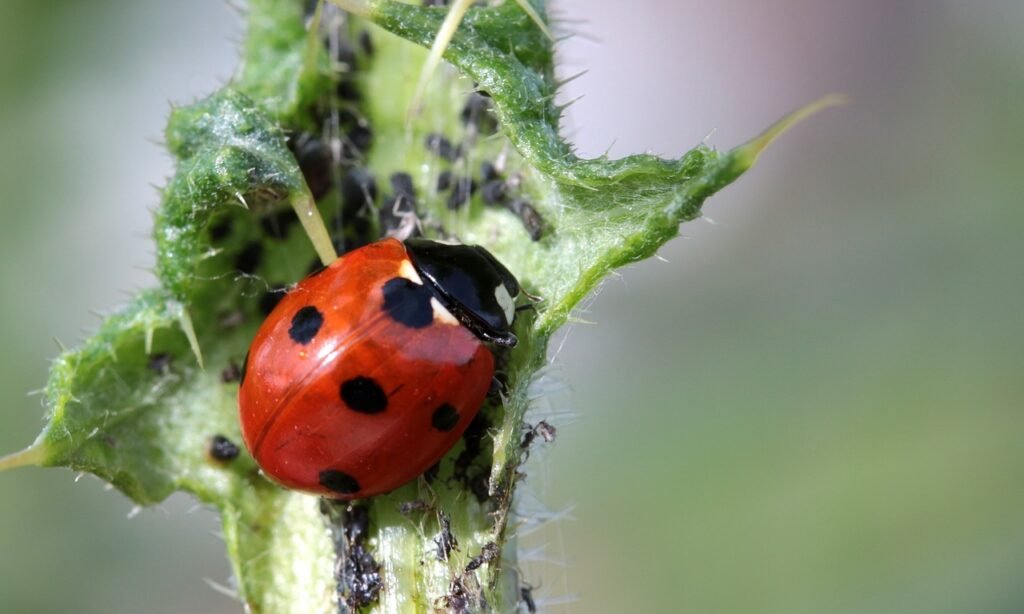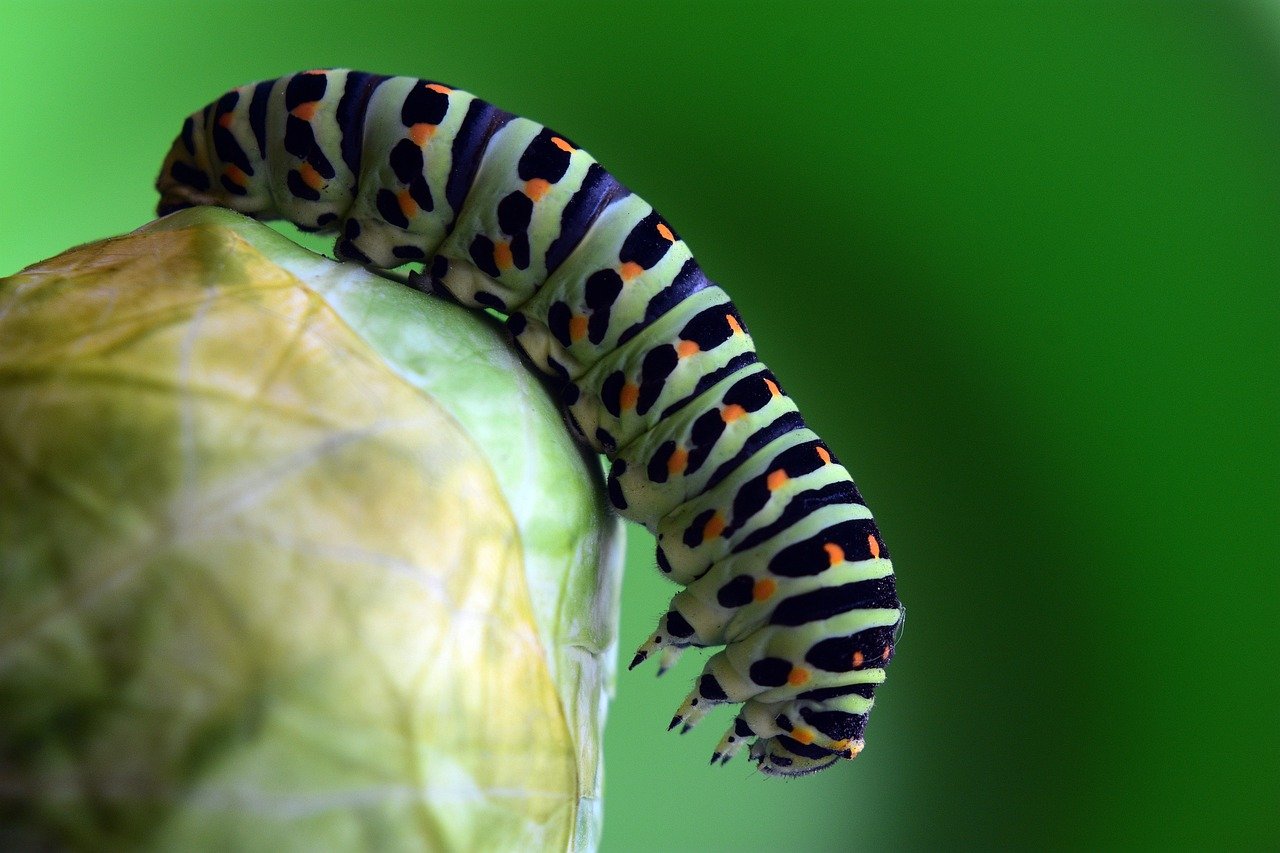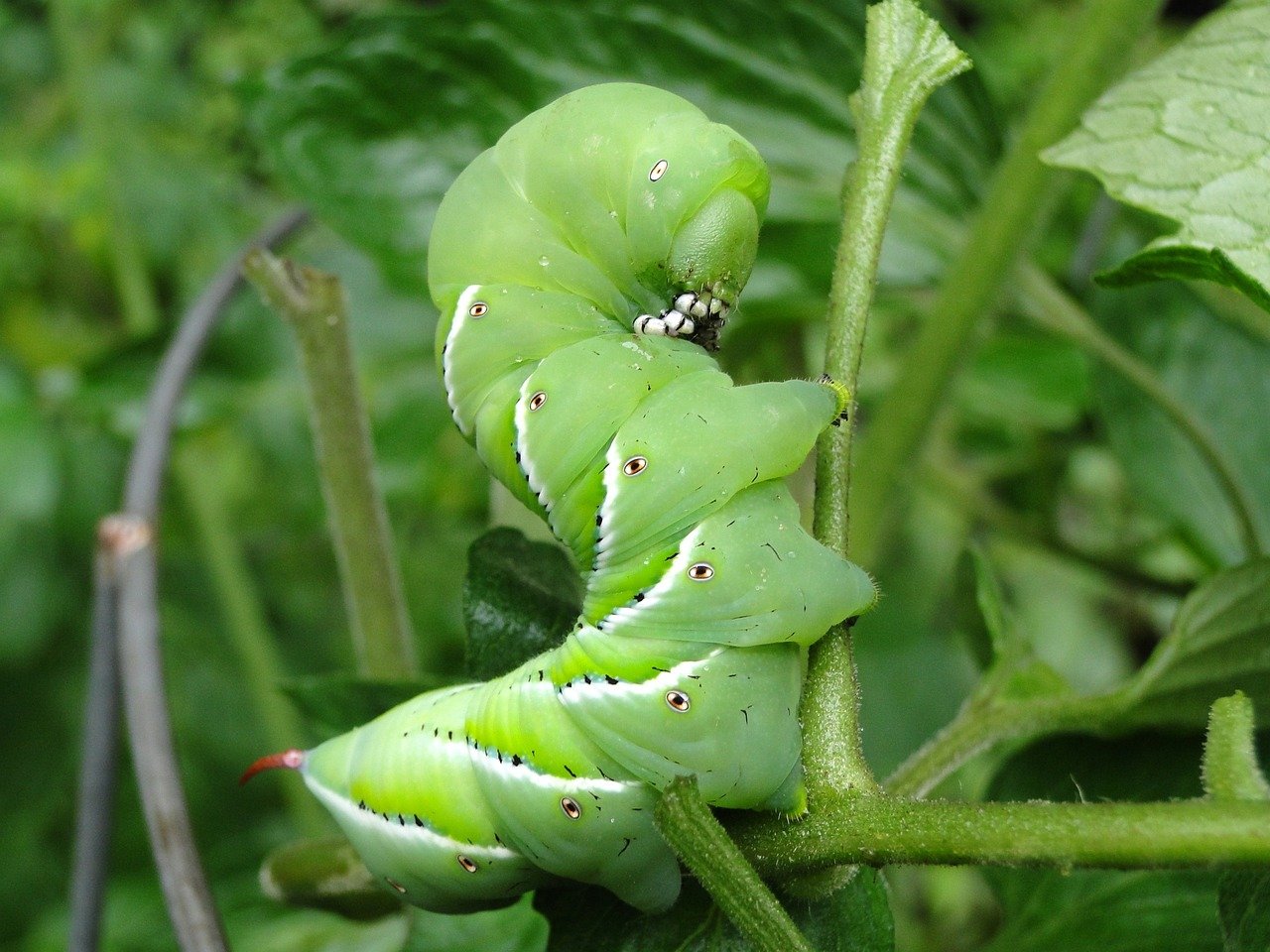
How to prevent and treat cabbage worms on your plants
The Troublesome World of Cabbage Worms
Welcome to the battleground of the garden, where tiny green invaders threaten to devour your precious cabbage plants. Cabbage worms, the bane of many gardeners’ existence, are small caterpillars that feast voraciously on cabbage family crops such as broccoli, cauliflower, and of course, cabbage itself. These pests can quickly decimate your carefully tended plants if left unchecked.
A Closer Look at the Culprits
Cabbage worms come in two main varieties: the imported cabbageworm (Pieris rapae) and the cabbage looper (Trichoplusia ni). The imported cabbageworm is a velvety green caterpillar with faint yellow stripes along its sides, while the cabbage looper is more identifiable by its looping movement as it crawls along leaves. Both types of worms have a hearty appetite for cruciferous vegetables and can cause significant damage if not managed properly.
Companion Planting Magic: Thyme and Mint

When it comes to warding off those pesky cabbage worms, consider turning to the power of companion planting with herbs like thyme and mint. These aromatic plants not only add a delightful fragrance to your garden but also act as natural repellents for cabbage worms.
The strong scents emitted by thyme and mint confuse and deter the moths from laying their eggs on your precious cabbages. Plus, having these herbs nearby can attract beneficial insects that prey on cabbage worm larvae, creating a harmonious ecosystem in your garden.
Row Covers: Your Plants’ Protective Shield
Shield your vulnerable plants from adult moths looking to lay their eggs by using row covers. These lightweight fabric barriers create a physical barrier between the moths and your precious crops, preventing them from accessing the leaves to deposit their eggs.
Row covers are particularly effective during the peak moth activity periods, ensuring that your plants remain unscathed by these voracious pests. Just remember to secure the edges of the row covers tightly to prevent any sneaky intruders from finding their way in.
The Avengers of Your Garden: Ladybugs and Parasitic Wasps

Invite some tiny but mighty allies into your garden in the form of ladybugs and parasitic wasps – nature’s very own pest control squad! Ladybugs are voracious predators of aphids, mealybugs, and cabbage worms, while parasitic wasps lay their eggs inside caterpillars, ultimately leading to their demise. By attracting these beneficial insects through planting nectar-rich flowers like dill or fennel nearby, you can create a balanced ecosystem where natural predators keep cabbage worm populations in check without any chemical intervention.
Natural Treatment Options

Spraying Plants with a Mixture of Neem Oil and Water
One effective natural remedy for dealing with cabbage worms is using a neem oil spray. Neem oil, derived from the neem tree’s seeds, acts as a potent insect repellant while also disrupting the growth and feeding patterns of cabbage worms. To create your neem oil spray, mix one to two tablespoons of neem oil with a quart of water and a few drops of dish soap in a spray bottle.
Shake well before each use and evenly coat your plants, focusing on the undersides of leaves where cabbage worms tend to hide. Repeat every 7-10 days or after rainfall to maintain its efficacy.
Applying Bacillus thuringiensis (Bt) to Kill Caterpillars
Another natural solution that can effectively combat cabbage worms is Bacillus thuringiensis (Bt), a naturally occurring bacteria that specifically targets caterpillars without harming beneficial insects or other wildlife. Bt works by producing toxins that disrupt the digestive systems of caterpillars, leading to their eventual demise. To apply Bt, mix the recommended amount according to the product instructions in a sprayer and thoroughly coat your plants’ foliage, ensuring you reach all affected areas where cabbage worms are present.
It’s important to reapply Bt after rain or heavy watering as it can wash off. With consistent application, Bt can be an invaluable tool in controlling cabbage worm populations in your garden.
Homemade Remedies

Creating a Garlic Spray to Repel Cabbage Worms
When it comes to fighting off those pesky cabbage worms, a trusty homemade garlic spray can work wonders. To concoct this potent solution, finely mince a few cloves of garlic and let them soak in a liter of water for about 24 hours. Strain out the garlic pieces and pour the infused liquid into a spray bottle.
Be sure to generously coat both sides of your cabbage leaves with this pungent mixture every few days. The strong odor of garlic acts as a natural deterrent, keeping those cabbage worms at bay without harming your beloved plants.
Dusting Plants with Diatomaceous Earth to Deter Pests
Another effective homemade remedy to combat cabbage worms is using diatomaceous earth, a fine powder made from fossilized algae. This natural substance works by dehydrating and effectively killing soft-bodied insects like cabbage worms upon contact.
Simply dust a light layer of diatomaceous earth onto your plants, making sure to cover all surfaces where these pests might lurk. Reapply after rain or heavy watering since moisture reduces its effectiveness.
Remember to wear a mask when applying as the fine particles can irritate your respiratory system. With diatomaceous earth on your side, those cabbage worms won’t stand a chance in infesting your garden!
Lesser-known tactics
Handpicking cabbage worms off plants daily
For those who prefer a hands-on approach to pest control, handpicking cabbage worms off your plants can be an effective method. Simply inspect your cabbage, broccoli, or other affected plants daily, and look for small green caterpillars munching away.
Wear gloves if you’re squeamish about touching them and gently remove them from the leaves. This manual removal not only helps reduce the immediate damage caused by the worms but also prevents them from laying eggs and multiplying further.
Introducing nematodes to soil to control caterpillar populations
Nematodes are microscopic roundworms that can be beneficial in controlling garden pests like cabbage worms. These tiny creatures are harmless to humans, animals, and plants but prey on the larvae of many insects living in the soil.
By introducing nematodes into your garden bed, especially around the roots of your brassicas, you can effectively reduce the population of cabbage worms and other harmful caterpillars. Nematodes work by seeking out their insect prey underground and releasing bacteria that kill the pests without harming your plants or other beneficial insects in the garden.
Conclusion

Happy and Healthy Cabbage Patch
As you wrap up your battle against those pesky cabbage worms, take a moment to appreciate the resilience of your cabbage patch. By implementing a variety of prevention methods, natural treatments, and homemade remedies, you’ve nurtured your plants back to health. Remember that gardening is a journey filled with ups and downs, but each challenge only makes you a better gardener in the end.
Nature’s Little Helpers
By inviting beneficial insects into your garden and creating a harmonious ecosystem, you’ve not only managed to control the cabbage worm population but also fostered a thriving environment for all creatures great and small. The presence of ladybugs, parasitic wasps, and other helpful bugs serves as a reminder that nature works in mysterious ways to maintain balance in our gardens.
A Bright Future for Your Green Allies
As you look ahead to future growing seasons, armed with newfound knowledge on combating cabbage worms, remember that every setback is an opportunity for growth. Your dedication to organic gardening practices and sustainable pest management techniques not only protects your plants but also contributes to the greater good of our planet. With each harvest comes the satisfaction of knowing that you’ve played a part in preserving the delicate balance of nature in your own backyard.




